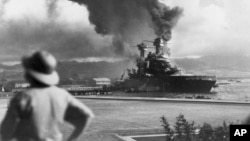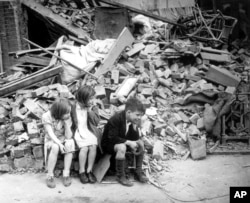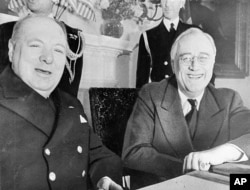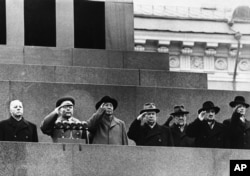Seventy-five years ago on December 7, the Japanese military launched an unprovoked and deadly attack on the American naval base in Pearl Harbor, Hawaii.
President Franklin Roosevelt described that day in 1941 as “a date which will live in infamy” during an appearance before a joint session of Congress the very next day. After a brief and forceful speech, the United States officially entered World War II when lawmakers approved a resolution declaring a state of war with Japan.
Three days later, Japanese allies Germany and Italy also declared war on the United States, and the U.S. Congress reciprocated.
The attack came as a profound shock to the American people. Strong domestic support for isolationism — that is, to stay out of the war unfolding in Europe, which had begun two years before — disappeared.
During that time, the United States was assisting Britain in beating back the Nazi advance under Roosevelt’s congressionaly approved lend-lease plan. Lend lease was the president’s way of honoring the American public’s distaste for direct involvement while simultaneously providing support for the U.K. without American bloodshed.
After Pearl Harbor, Roosevelt’s alliance with Britain was now a given — and was buffeted by his already warm relationship with British Prime Minister Winston Churchill.
The December 7 attack by Japan lasted just two hours, but it proved devastating nonetheless. The Japanese managed to destroy nearly 20 American naval vessels, including eight battleships, and more than 300 airplanes. More than 2,300 Americans soldiers and sailors were killed and upwards of 1,000 others were wounded.
It would take four more years before the war ended, in large part due to an uncomfortable alliance between the United States and the Soviet Union, and the American decision to drop two atomic bombs on Japan. The military defeat of Germany and its allies also brought an end to German Chancellor Adolph Hitler’s “Final Solution,” the German leader’s plan to exterminate the Jewish people.
World War II remains the most destructive conflict in history.
World War II fatality statistics vary, with estimates of total deaths ranging from 50 million to more than 80 million. The higher figure of more than 80 million people includes deaths from war-related disease and famine. Among the fatalities: 6 million Jews who were killed by the Nazis.
The legacy of the war would include the spread of communism from the Soviet Union into eastern Europe, and later, to China. Global power shifted from Europe to the two rival superpowers — the United States and the Soviet Union — which spent the next five decades fighting what was known as the Cold War.











